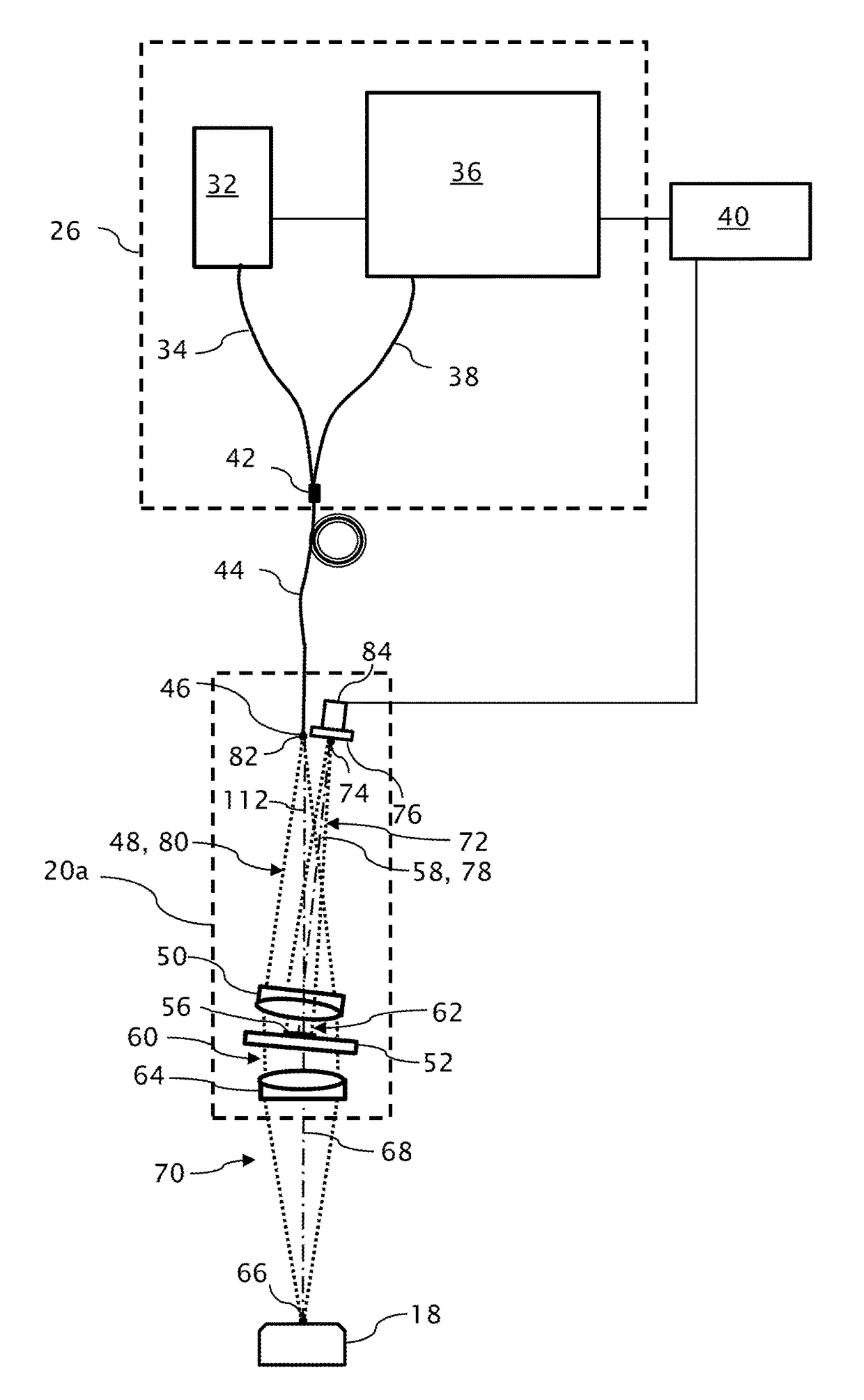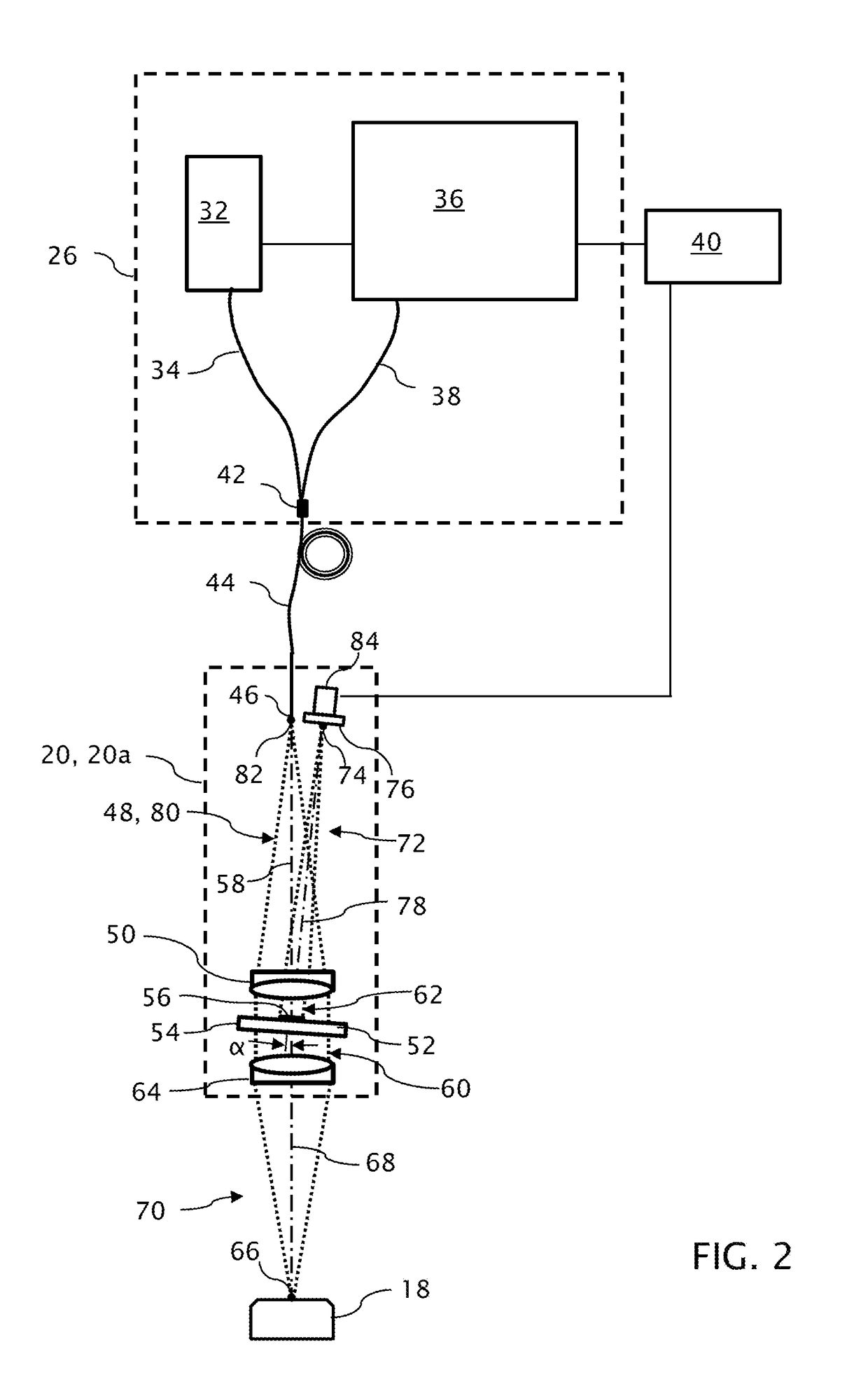Optical pen for interferometric measuring machine
an interferometric measuring machine and optical pen technology, applied in the field of optical pen for interferometric measuring machines, can solve the problem of limiting the possibility of relative disturbances differentially affecting the beam, and achieve the effects of reducing the complexity and number of interferometric components, expanding the measurement opportunities of optical pen, and reducing the possibility of disturbances affecting the interferometric function
- Summary
- Abstract
- Description
- Claims
- Application Information
AI Technical Summary
Benefits of technology
Problems solved by technology
Method used
Image
Examples
Embodiment Construction
[0026]A multi-axis machine 10 depicted in FIG. 1 is one of many possible configurations of an optical measuring machine, includes an x-y stage 14 for horizontally translating a test object 18 along X and Y coordinate axes and a slide mechanism 16 for vertically translating an optical pen 20 (as the visible portion of an interferometer probe) along a Z coordinate axis. The x-y stage 14 is supported on a machine base 22. The slide mechanism 16 is supported in a slide support 26 carried on a column 24. The optical pen 20 is carried on an articulated arm 28 that is both pivotal about a horizontal axis and rotatable together with the pivot axis about the Z coordinate axis, although the optical pen 20 could be fixed mounted to the Z coordinate axis. Other unseen portions of the probe optics, including one or more light sources and a detector, or other apparatus supporting the metrology functions of the machine 10 can be housed in the slide support 26 within which the slide mechanism 16 is...
PUM
 Login to View More
Login to View More Abstract
Description
Claims
Application Information
 Login to View More
Login to View More - R&D
- Intellectual Property
- Life Sciences
- Materials
- Tech Scout
- Unparalleled Data Quality
- Higher Quality Content
- 60% Fewer Hallucinations
Browse by: Latest US Patents, China's latest patents, Technical Efficacy Thesaurus, Application Domain, Technology Topic, Popular Technical Reports.
© 2025 PatSnap. All rights reserved.Legal|Privacy policy|Modern Slavery Act Transparency Statement|Sitemap|About US| Contact US: help@patsnap.com



